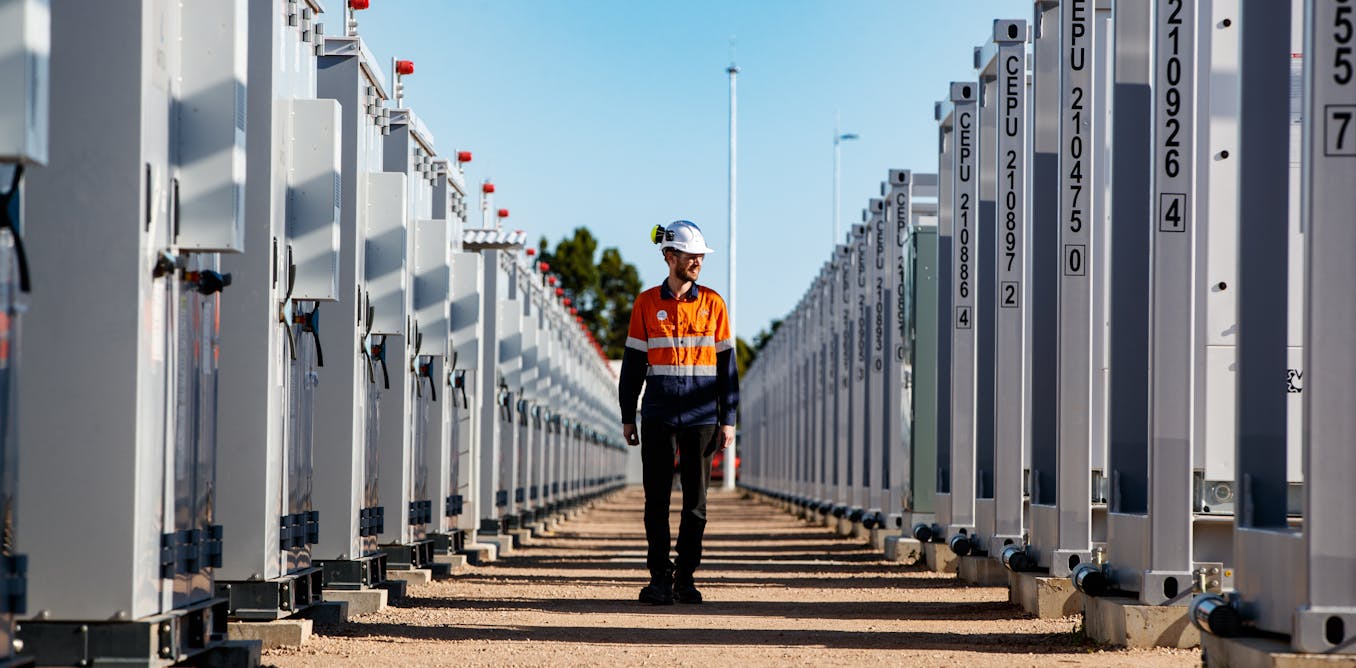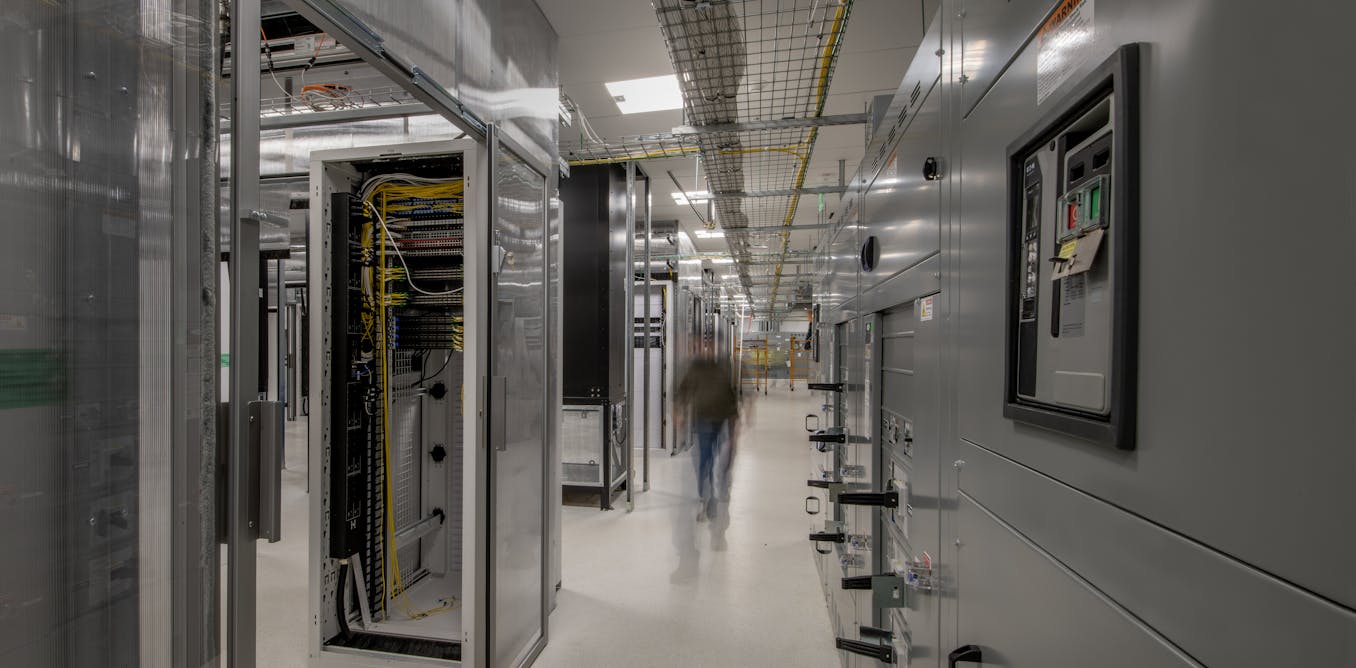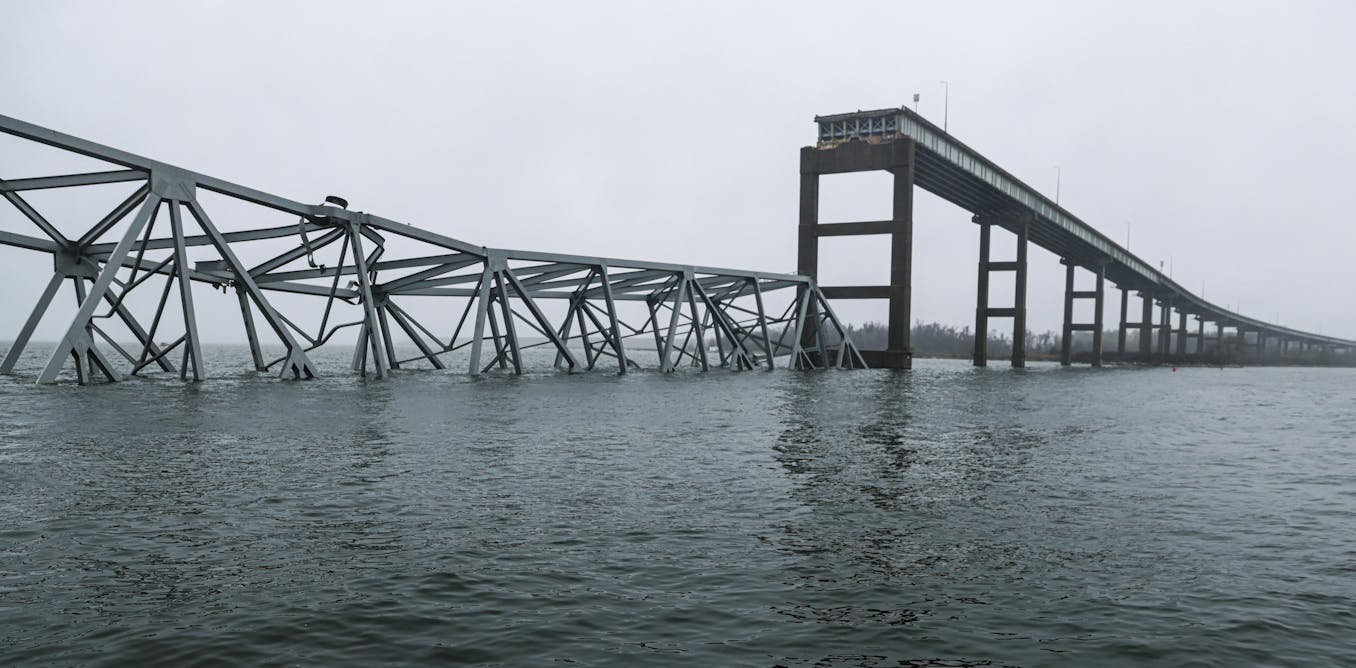The use of floating solar panels on freshwater bodies is an increasingly popular way of generating renewable energy. Such systems convert the sun’s rays into electricity while minimizing water evaporation. What’s more, they spare land that could be better used for agriculture or housing.
But like all energy systems, floating solar power, also known as floating photovoltaics or floatovoltaics, comes with environmental tradeoffs, says Nicholas Ray, an assistant professor in the School of Marine Science and Policy at the University of Delaware. In particular, does the benefits of clean energy from floatovoltaics offset the adverse impacts on the freshwater ecosystem beneath the panels? Answering that question was the focus of a study in Environmental Science & Technology published in December by Ray and colleagues at Cornell University, where Ray was a postdoc.
The study found that floating solar panels covering 70 percent of small man-made ponds increased greenhouse gas emissions by nearly 30 percent and rapidly decreased dissolved oxygen in the water. But the rise was lower than the researchers expected.
“I was expecting total emissions, like the whole pond emissions, to double—so it was much less,” Ray says.
And in general, floatovoltaics are expected to have a lower carbon footprint than traditional solar panels installed on land, the study concludes.The emissions can be mitigated if the floating solar panels are deployed in different scenarios—on larger bodies of water, on water bodies with less organic material than the grassy ponds in the study, or with oxygen pumps under the solar panels.
Floating Solar’s Global Power Potential
The World Bank estimates that floatovoltaics could potentially generate 400 gigawatts of electricity—double the worldwide capacity of existing solar panels. That’s a conservative estimate based on covering just 1 percent of man-made freshwater bodies with panels. Montana alone has a potential of 44 GW, according to a different study of federally owned reservoirs in the United States. There’s still a ways to go to reach those forecasts. In November, the energy data company Wood Mackenzie estimated that 1.7 GW of floating solar capacity would be added in 2024, rising to 6.7 GW this year and 13.5 GW in 2026.
In the United States, the largest array of floatovoltaics is on display on the Canoe Brook reservoir in Short Hills, N.J., where over 16,500 panels generate up to 8.9 megawatts in order to power the area’s water treatment plant. Most floating arrays are installed on smaller lakes and reservoirs.
Floating solar panels on small ponds increased methane and carbon dioxide emissions and decreased dissolved oxygen and the water temperature. Nicholas Ray, Meredith Holgerson, et al.
The Cornell study was the first to examine the effect of floatovoltaics on actual small ponds. In the summer of 2023, decommissioned solar panels from the floating solar company Ciel et Terre were placed on three ponds in…
Read full article: Do Floating Solar Panels Cut Greenhouse Gas Emissions?

The post “Do Floating Solar Panels Cut Greenhouse Gas Emissions?” by Elissa Welle was published on 02/28/2025 by spectrum.ieee.org


































Leave a Reply